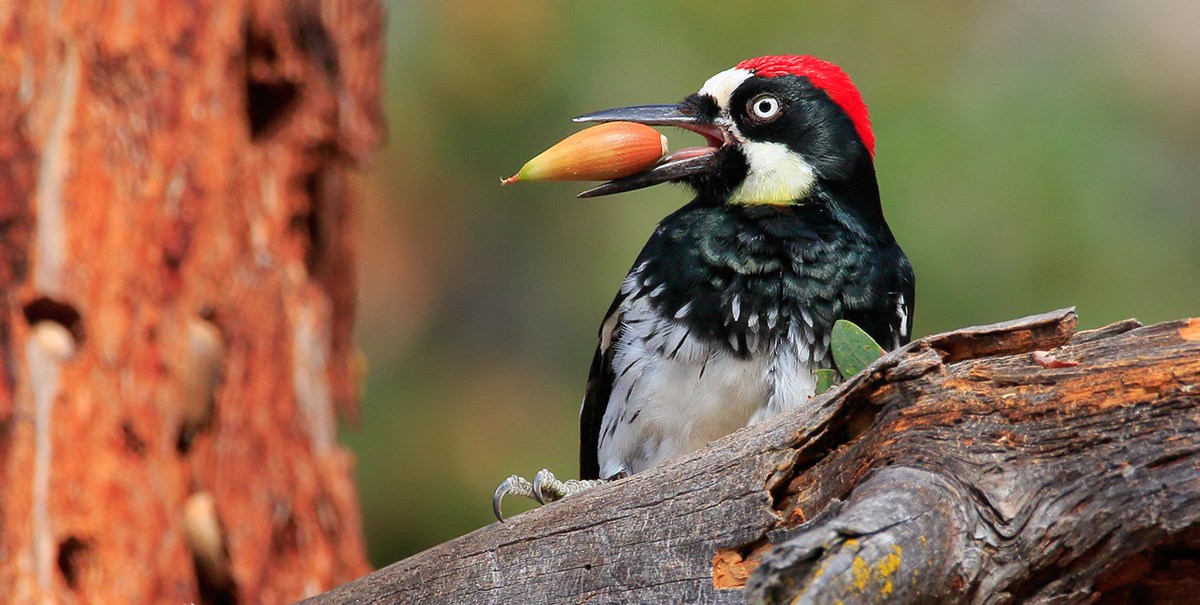Indigenous Woodpeckers in Florida: An Overview to Types and Behaviors
Indigenous Woodpeckers in Florida: An Overview to Types and Behaviors
Blog Article
Discover the Remarkable World of Woodpeckers: Whatever You Required to Know
The globe of woodpeckers is a realm filled up with distinct behaviors, complex adjustments, and a diverse array of types. From their habitats and distribution patterns to their feeding behaviors and specialized physiological functions, woodpeckers have long mesmerized the interest of ornithologists and nature lovers alike.
Woodpecker Habitats and Distribution
In North America, for example, woodpeckers can be identified in both coniferous and deciduous woodlands, utilizing their strong beaks to forage for pests and develop nesting tooth cavities in trees. In Africa, certain woodpecker types have actually adjusted to arid atmospheres, such as the acacia forests, where they play an essential role in regulating insect populations.

Feeding Behaviors and Diet Regimen
Among the numerous elements of their actions, woodpeckers show unique feeding behaviors and dietary preferences. These birds are largely insectivores, with a diet regimen that includes ants, beetles, caterpillars, and other insects found in trees. Woodpeckers use their solid beaks to pierce right into the bark of trees, probing for pests and larvae hidden beneath the surface. Along with pests, woodpeckers additionally consume nuts, seeds, fruits, and sap. Some types have actually specialized tongues with barbed suggestions that aid them remove bugs from gaps in wood.
Woodpeckers are recognized for their drumming actions, which offers not only to communicate with various other woodpeckers yet also to locate food. The quick drumming audio is produced by the bird pecking on resonant surfaces like dead trees or metal poles. discover here This habits can attract pests hidden in the timber, allowing the woodpecker to identify their visibility and feed on them.
Special Adaptations for Tree Climbing
In their proficient pursuit of insects hidden within tree bark, woodpeckers have actually developed remarkable anatomical functions that equip them with one-of-a-kind adaptations for efficient tree climbing. Woodpeckers have strong neck muscles and an one-of-a-kind skull structure that take in the influence of constant pecking, enabling them to climb up up and down without triggering harm to their minds. These adjustments display the extraordinary transformative design that allows woodpeckers to navigate trees with precision and effectiveness.
Diverse Woodpecker Variety Worldwide
With over 200 different types spread out throughout various habitats worldwide, the household of Picidae includes an amazing variety of woodpeckers. These birds can be discovered in woodlands, my link timberlands, savannas, and also city locations, showcasing their versatility to various settings. From the famous Northern Flicker in North America to the colorful and elusive Crimson-backed Flameback in Asia, each woodpecker species exhibits unique attributes in regards to tuft, behavior, and environment preference.
Woodpeckers vary considerably in dimension, with the diminutive Downy Woodpecker measuring around 6-7 inches in length, while the effective Lineated Woodpecker can rise to 17 inches - Woodpeckers in Florida. Their beaks likewise are available in different sizes and shapes, mirroring their feeding routines. Some species focus on removing pests from tree bark, like the Acorn Woodpecker, while others, such as the Black-cheeked Woodpecker, prey on fruits and seeds

Preservation Efforts and Challenges
Conservation campaigns for woodpecker populations are crucial in mitigating the impact of habitat loss and other hazards encountering these varied bird varieties. Woodpeckers face numerous obstacles to their survival, primarily because of logging, urbanization, climate adjustment, and invasive types. To address these issues, conservation initiatives concentrate on shielding and restoring woodpecker habitats, applying sustainable forestry methods, and increasing understanding regarding the importance of these birds in ecological communities.
One substantial challenge in woodpecker preservation is the fragmentation of their habitats, leading to separated populations that are more at risk to see this website extinction - Woodpeckers in Florida. Guardians work to develop wildlife hallways and shielded areas that link these fragmented environments, permitting woodpeckers to move between various areas for feeding, reproducing, and sanctuary

Verdict
In verdict, woodpeckers are fascinating birds with special adaptations for tree climbing and feeding behaviors. More research and preservation actions are required to guarantee the survival of woodpeckers in the wild.
Report this page